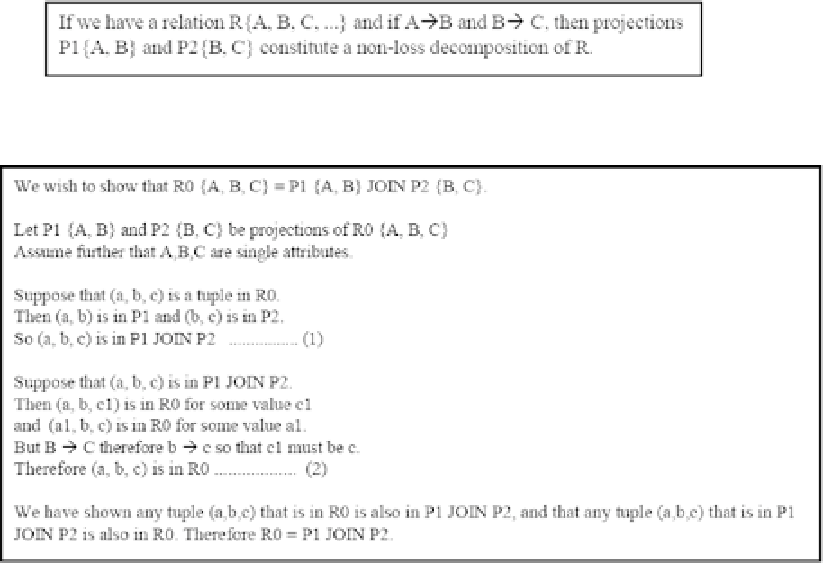Database Reference
In-Depth Information
Here is a formal definition of an NLD:
Notice that we have glided into two new terms,
projection
and
join.
These will be
formerly treated later in the course. Suffice it now to say that a projection on a relation
is an extraction (into a new relation) of some attributes of the relation; a join requires
at least two relations and may be construed as the opposite of a projection: If you can
project R into P1 and P2, then you may be able to join P1 and P2 to yield R.
Given this definition, we need to address the following questions:
1.
How do we find non-loss decompositions?
2.
When should we replace a relation by a non-loss
decomposition?
3.
What are the advantages?
Heath's theorem (of [Heath, 1971]) addresses questions (1) and (2). The answer to
the third question is stated in section 4.3 above. Heath's theorem is stated below:
Example 2:
Proof of Heath's Theorem:


